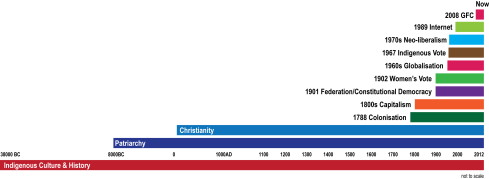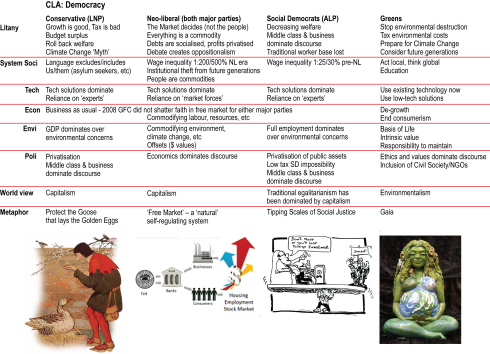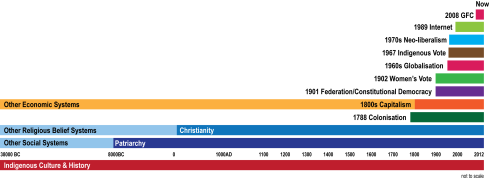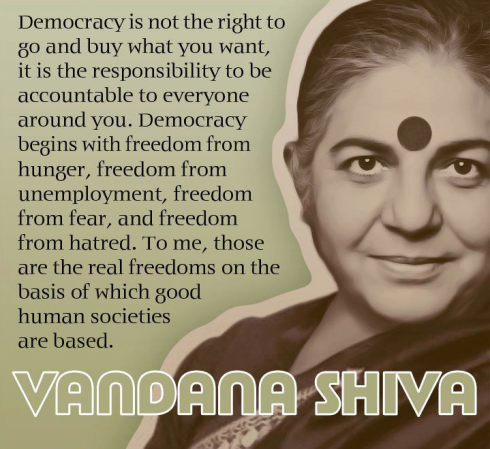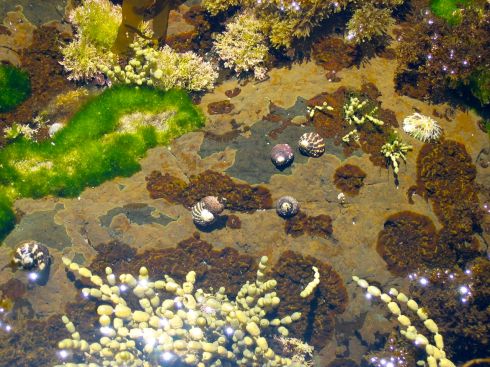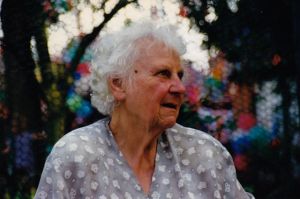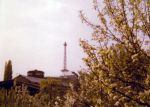Strategic Foresight Leadership Intervention Proposal:
“Whatever form it takes, the democracy of our successors will not and cannot be the democracy of our predecessors.” Robert Dahl 1
The Commonwealth of Australia is currently a federal constitutional monarchy under a parliamentary liberal democracy. Its secular government combines the concepts of federalism2 and a Westminster-style parliamentary democracy where the separation of powers between the executive, legislative and judicial branches of government is diminished through an intertwining of the executive and legislative. Representatives are chosen via free elections from four main and several minor political parties using a preferential voting system. As a liberal democracy, Australia’s rule of law aims to protect values of religious tolerance, civil freedoms and human rights (Australian-Government, 2008).
Yet democracies can be ‘tricky’ (Ward, 2012:20)3. The concept of ‘representation’ – a social contract to transfer sovereignty from the people to the representative – within democracy is still disputed because the inherent indirectness dissociates the people from government (Alonso et al., 2011:27-28) and, in the case of Australia, by removing representation further via allocation of preferences, indirectness only increases. Other challenges for the future of liberal democracy include overcoming the short-termism inherent in electoral cycles to better deal with long term issues and to account for future generations and non-voting stakeholders’ interests (Ward, 2012:20).
Arguably the modern democratic system, however flawed in practice, remains the most egalitarian system of government yet developed. Nevertheless, much scope for improvement and adjustment in its implementation remains to make democracy more representational and inclusive of all stakeholders. This presents an opportunity for Strategic Foresight Leadership (SFL) to intervene and re-think our democracy’s current manifestation in the face of present and future economic, social and environmental challenges (Appendix 1: Intervention Plan).
1 Quoted in ‘Introduction’, paragraph #11, Philippe C Schmitter and Alexander H Trechsel (coordinators), Green Paper: The future of democracy in Europe, 2004, Council of Europe, available online at http://www.coe.int/t/dgap/democracy/activities/key-texts/02_green_paper/GreenPaper_bookmarked_en.asp. The same view is mirrored on page 1 of the 2009 Australian Government Electoral Reform Green Paper – Strengthening Australia’s Democracy. 2 A union of self-governed states under one constitution. 3 See also Schumpeter’s distinction between ‘Classical Democracy’ and ‘Democracy as Competition for Political Leadership‘, page xix, Schumpeter, J. A. 1994. Capitalism, socialism and democracy. 3rd ed. London: Routledge.❧
Democracy Situated in History
Figure 1: Mapping influences and changes in Australia – timeline (Source: S. Gneist 2012)
Although 200 years of European-based culture were preceded by 40,000 years of indigenous culture, Australia’s institutions continue to be based on European traditions and its pre-democratic hierarchies remain relatively unquestioned (Figure 1) – democracy was, “grafted onto pre-democratic institutions of representation” (Alonso et al., 2011:1). As a result, our modern democratic system continues to rest on established belief systems, including colonialism (Peterson & Sanders, 1998:101-103), religion, patriarchy, rationalism, capitalism, and these continue to influence the structure and progress of society (Bonaiuti, 2012:526, Scott, 2006:11). If these past influences remain unquestioned, democracy does, as Ward (2012:25) observes, become path dependent. The challenge for SFL is to disrupt this process.
A commonly shared vision of ‘Ideal Democracy’ involves high levels of inclusiveness, accountability, strong leadership, sense of belonging, transparency, long termism, community engagement, fairness, as well as being highly participatory, allowing for public deliberation, base decisions on multiple local/global scales and engendering a high degree of trust (Ward, 2012:32-33). Many of these qualities are already mirrored in SFL principles and by applying Strategic Foresight participatory methods, tools and analysis on a large scale, aspirational futures (Bezold, 2009:84-85) can be anticipated, explored and backcast to create alignment between the present and the shared vision, ultimately facilitating institutional change.
❧
Apart from the continuing ties to former eras, modern democracy also evolved parallel to the capitalist free market system and mirrors its ideas and rewards of progress, growth and development closely. The resulting interpenetration of the political and economic spheres has over time reduced influence on decisionmaking away from government into the corporate sphere (Deriu, 2012:554-555). The adoption of neo-liberalist concepts by both major Australian parties (ALP and Liberals) since the 1980s (Curtin & Simes, 2008:5) has further reduced the scope of decisionmaking to limited economic values over social ones. Deregulation and privatisation, as part of the ‘liberalisation’ of the global market, has decreased democratic governments’, and therefore citizens’, influence over important national enterprises, resources and services and decreased social welfare (Barnes & Hall, 2012:1-2). As a result, debts are socialised and profits are privatised, effectively disowning current and future generations.
This redistribution of assets from public into private ownership also results in widening the gap between ‘winners and losers’ through polarisation of wages and resources, followed by a decrease in wellbeing (Barnes & Hall, 2012:9-10,13-14, Bonaiuti, 2012:529-530). Worldwide parallels of these developments have led to a current crisis in democracy (Romano, 2012:589, Deriu, 2012:554, Johanisova & Wolf, 2012:563) where decisions favour shareholders and consumers over other stakeholders and citizens (Deriu, 2012:555, Barnes & Hall, 2012:2). Paradoxically, and increasing with globalisation, decisions influencing all are more often made within non-democratic hierarchical structures of business organisations than in parliament, add to this the effects of increasing populations, and the result is that each single constituent has ever less influence on outcomes (Bonaiuti, 2012:532).
To liberate democracy from these limitations, a de-coupling of the political system from the dominant economic model, the development of alternative economic scenarios and a review of business and social ethics, seems essential. New sustainable economic market and non-market models are necessary (Bonaiuti, 2012:530, Scott, 2006:13) to allow for alternative futures to those colonised by the linear, environmentally and socially destructive ‘business as usual’.
❧
Resilience – the Cost of Neo-Liberalism
Market logics are intruding ever further into spheres of life other than economic ones (Habermas 1985 & Sennett 2006, quoted in Barnes & Hall, 2012:4). Unfortunately, the neo-liberal market theory – unrealistically portrayed as a self-regulating and balancing system (Bonaiuti, 2012:526) – does not allow for the finite system and limited resource base it operates within, externalising the environment along with social impacts. The free market theory model and its associated technocracy bears little relationship to the natural world we inhabit.
Furthermore, according to Holling (2001:394) resilience of any system – as the result of its adaptive capacity – is affected by exogenous agents (like the above-mentioned economic externalities) and responds with collapse or reorganisation. This development can already be seen in environmental degradation, climate change and the GFC which in turn can have devastating consequences for societies and the planet. At present, none of these multiple developing crises have resulted in a significant change in commitment and policies by most, including our own, democratic governments (Johanisova & Wolf, 2012:564).
Barnes & Hall (2012:22) argue that democratic governments can also act as sources of social resilience by redistributing wealth and offering protection to their weaker members, to which currently excluded groups like youth and future generations belong. Yet as a direct result of neo-liberalism, particularly due to the commodification of labour, “Since the 1980s, average wellbeing in some countries has fallen by as much as 17 percent. From an egalitarian perspective, this development is cause for concern” (Barnes & Hall, 2012:22). The shadow-side of this unchecked development has led to an increase of social conflict and ‘othering’ of ethnicities or religions (Barnes & Hall, 2012:23-24). Strong democratic governments can provide the capacity to direct efforts and responses, including economic ones, across all scales of society to improve its overall resilience and wellbeing (Mayntz and Scharpf 1987, quoted in Barnes & Hall, 2012:26-27). Clearly, new democratic social and economic narratives (Scott, 2006:11,14) based on co-evolution, co-operation and inclusive of all stakeholders and the planet need to be envisaged and developed. Deepening methods like Causal Layered Analysis (CLA, see Appendix 2: Tools & Methods), combined with capable SFL can uncover impeding narratives and help transform these into constructive ones.
❧
Actors of Social Change
In the past, successful social change increased democratic equality (women’s vote, indigenous citizenship) through public pressure and majority voter support of referendums in our constitutional system (Australian-Election-Commission, 2012). Historically, referendums involving the transfer of economic powers of decision or control to the Commonwealth have not been successful (Australian-Election-Commission, 2012). Yet, industrialists and national/global corporations have become powerful, non-democratic change actors, influencing government decisions by using their economic power over both public and industry while bypassing the democratic system to increase their own ‘efficiency’, profit margins and shareholder advantages over social equality and advancement of all stakeholders interests (Deriu, 2012:555-556). The growing inequality of wealth distribution towards corporations and away from the public is placing increasing strain on democracies around the world, with growing government austerity resulting in unrest and destabilisation of democratic systems (Hopkin, 2011, Sen, 2012).
Australia’s current bi-partisan government – a result of the preferential voting system – decreases the voices of smaller groups over the dominant discourse of the two major parties, both embedded in neo-liberalism, therefore excluding alternative discourses from our democratic system (Curtin & Simes, 2008:2, Mudge, 2008:704-705). Here too, SFL intervention can allow more diverse world views to contribute. Public forums of deliberation present rich sources of ideas and alternative views which can inform government (Salkin & Gottlieb, 2012:785). ‘Community Cabinets’ , reintroduced by former Prime Minister Kevin Rudd in 2008 and regularly held in different locations around Australia, are one such forum. Others include non-government organisations (NGOs)4 and the many grassroots community organisations which specialise in diverse interests and subjects and can bring local knowledge and wisdom into the bigger picture.
By aligning and organising cross-disciplinary approaches and shared organisational interests, SFL can increase the voice of these diverse/marginal groups, formulate shared recommendations based on their varied inputs and introduce these into open policy forums for deliberation – effectively bringing traditional leadership and people into closer dialogues through SFL intervention.
4 See http://www.worldlii.org/catalog/208.html for a list of NGOs in Australia❧
Strategic Foresight Leadership and the Future of Democracy
By using SFL methods, the democratic system can be analysed to reveal its underlying belief systems and currently accepted historic influences in order to assess their present usefulness and allow the future to be transformed (Appendix 2: Tools & Methods).
Disentangling democracy from the dominant economic model is an essential first step to allow for new democratic and sustainable economic scenarios to be developed (Bonaiuti, 2012:533). Critical SFL has a role in highlighting the colonised versions of the future and disrupting the business as usual approach promoted in the interest of the dominant few. Alternative visions based on the voices and ideas of the many can be developed into new shared narratives – allowing for interconnection, inclusiveness and co-operation rather than separation and antagonism.
Citizens under-represented in dominant discourse already organise themselves into NGOs and work towards shared goals within environment, social justice, welfare and other spheres. SFL can facilitate democratic agency by accessing the local knowledge in these networks to empower communities and citizens and develop diverse local responses to global and national issues through critical deliberative processes. Once formulated into actions, ideas and visions can move from the grassroots to the decisionmaking levels of government, transforming the top-down approach to an active action learning approach. This will allow for more than the current dominant voices and views to be heard and listened to within government and decisions to be based on social and ethical rather than solely economic reasoning. Democratic leadership of the future will require SFL principles to be applied at every level of government – from grassroots deliberation to the elected representatives, including the head of state.
5 He is reported to have first said this in an interview on Fresh Air, NPR (31 August 1993) {unverified}, he repeated it, prefacing it with “As I’ve said many times…” in “The Science in Science Fiction” on Talk of the Nation, NPR (30 November 1999, Timecode 11:55)“The future is already here, it’s just not evenly distributed.” (Science Fiction author William Ford Gibson, 1999) 5
❧
Key Learnings
- Democratic change is not a linear process and follows different timeframes within different levels of government and groups. It is difficult to establish exact timeframes, but SFL can create the conditions for facilitating change.
- Lasting social change is most often initiated from the people (bottom up), while attempts to achieve greater control usually issue from government (top down) and attempts to influence economic issues from outside both groups.
- Essentially, all change has social consequences (i.e. constitutes social change), therefore agency for change has to be woken at the grassroots level and ideas can be formulated and co-ordinated through effective SFL to achieve lasting change. Through critical SFL, embedded hierarchies and their undemocratic influence can be exposed, increasing accountability, transparency and improving trust between representatives and the represented.
- Causal Layered Analysis reveals assumptions and undisclosed world views influencing different stakeholders and resulting in underlying myths which often work against achieving cohesion within society. By initiating reflective deliberation to identify more desirable narratives, SFL can help activate more suitable archetypes to guide active community engagement.
- Transforming governance into SFL in action within democracy by allocating more agency to the people facilitates societal cohesion and flexibility in the face of rapid change.
❧
Appendix 1: Intervention Plan
Pre-requisites: Democracy is an ideal and in its ideal form remains a vision to move towards. Strategic foresight (SF) shares many of the attributes of democracy (participatory, open, based on sharing, etc.) and ‘good’ SF leadership can bring much into the process of evolving the current system. Good SFL can be defined as leadership which does not represent an existing agenda, but facilitates a broad base to examine and develop their own understanding and implementation through experimentation and reflection. This process requires trust to develop on all sides – also an essential requirement within a successful democratic system and one to be modeled through SFL to the current democratic leadership which lacks the trust of many constituents and who are in turn not trusted by their leadership to contribute much more than their vote/preference.
Implementation: SFL has to become an ongoing process within democracy, initially starting from the local grassroots level of the people (local government) and informing and including ever higher levels of government (State and Federal) to dissolve the perceived barriers between these levels and add flexibility to government to deal with increasing speed of change at all levels of society and the external environment by providing access to a larger pool of wisdom than currently drawn on. This is a longterm process, since transformative change requires old standing belief systems and structures as well as habits to be replaced with new ones. Introducing SFL methods and tools into regular usage and practice can potentially speed up this process. The evaluation of the process is in increased participation and the flexibility to respond short term and plan long term of the democratic and political system.
❧
Appendix 2: Methods & Tools
Method 1 (Application): AAL approach
Reasoning: The first step is to become conscious of our lenses and limits of framing. By following an AAL approach (Figure 2), existing programmed knowledge [P], historical and traditional models and institutions can be examined and by including other ways of knowing [WK], like 40,000 years of indigenous wisdom, different gender approaches or other economic, social and institutional models, questions about their future relevance, necessity and viability are raised [QF].
Evaluation: By applying this framework, imbalances become clear: [P] is currently dominated by western world views and economic priorities, [WK] shows which actors actively influence future possibilities and which don’t by revealing those voices left out (future generations, indigenous, youth, ‘externalities’), and [QF] relies on sometimes uncomfortable critical analysis which threatens current dominant structures (hierarchies, plutocracy), ideas and assumptions and remains sadly neglected. By enriching [WK] and [QF] through SFL, new ideas can develop in the overlap ‘between’ categories and emerge into applications.
Goal: Balancing this AAL process can result in a reorganisation of the existing division of agency in light of emerging issues – including climate change, resource limits, continued and de-growth models, GDP wealth, changing values and ethics – to improve the resilience of society and be reflected in the democracy of the future.
Method 2 (Research): The six pillars – MATDCT
Reasoning: To develop an intervention, I found it helpful to examine the subject of democracy via Inayatullah’s six pillars (Inayatullah, 2008) to locate useful tools (in brackets):
- Mapping: Democracy and social change – shared history to reveal its foundations (timeline, environmental scan STEEP, futures triangle)
- Anticipating: Current literature review of democracy and emerging issues (emerging issue analysis)
- Timing: Challenging historical structures and developing shared visions/new understandings – ‘Aspirational Futures’ of democracy (other than linear – cyclic, spiral pathways)
- Deepening: Shifting underlying beliefs and locating habits which hinder progress towards the vision (Causal Layered Analysis)
- Creating Alternatives: Scenarios of ‘Ideal Democracy’ allowing for de-growth and other economic models and outcomes (scenarios)
- Transforming: Backcasting and charting an AAL course, facilitate the voyage towards new futures (visioning, backcasting, action learning)
Evaluation: MATDC revealed several tools which allowed for important insights to develop. My preferences and reasoning for their relevant uses are explained below.
Tool 1: Mapping – Timeline
Reasoning: By mapping historic developments that led to or happened since the institution of democracy in Australia (see Figure 1, p2), hidden influences were revealed – as well as certain exclusions (see Figure 4, p14).
Evaluation: A useful visual aid to locate particular structures within the system, providing a starting point to examine/question their future relevance by inviting deepening understanding.
Tool 2: Deepening – CLA
Figure 3: Example CLA – Ideologies in Australian politics (Source: Gneist 2012)
Reasoning: Causal layered analysis, developed by Inayatullah (2004), is a helpful tool to examine the underlying similarities, differences and narratives between various groups and understand their current ir/relevance – the inconsistencies between the litany, aims and beliefs are highlighted through this process and can provide major insights into personal and cultural blockages leading to new insights and the possibility of transformation (Figure 3, p13).
Litanies show up the attention-grabbing one liners and either/or problem dialectics, and often favour dystopias over (e)utopias.
Systemic analysis gives insights into trends (i.e. Technological: internet now allows common access to news, knowledge, visions. Economical/Social: neo-liberalism commodifies labour, resources, environment, climate change, etc. (Bonaiuti, 2012:527-529)) as well as historic influences and fallacies (i.e. Political: Low tax social democracy does not exist, welfare and social justice comes at a cost and provides benefits to all, fosters solidarity, equality and social fabric). Frequently, technical or economical solutions (i.e. ‘exchange of equivalents’ (Bonaiuti, 2012:529)) dominate discourse – although often extremely questionable in light of issues like climate change – continuing the unquestioned application of paradoxical concepts (i.e. selling/buying bottled water often more expensive than petrol per litre). Applying AAL to this analysis encourages a culture of exploration, deliberation and reflection, allowing discoveries to emerge between disciplines.
Figure 4: Dominant views have supplanted other ways of knowing (Source: Gneist 2012)
Dominant world views replace and exclude other ways of knowing – whether indigenous, other cultures, women, children or minorities – and different trajectories become excluded from selective history (Figure 4).
New metaphors and narratives are needed to transform existing institutions. The essential deepening through CLA helps to identify current dominant myths. It allows for new actors, visions and positioning to arise by questioning claims and undisclosed models and allows for the creation of new templates and patterns. This enables changes on multiple scales and helps formulate new interpretations based on shared values, potentially leading to transformation.
Evaluation:CLA is an inclusive tool to apply in public deliberation processes among diverse stakeholders to lead participants towards new economic and social future scenarios and develop transformative visions of democracy based on their deepened understanding resulting from the process. I personally use it to examine my own or to strategically question other beliefs to gain a better understanding of the motivations for actions and reactions.
Tool 3: Creating Alternatives – Scenarios
Reasoning: Democratic scenarios (see for example Deriu, 2012:557-558) can provide alternatives and allow for exploration of ideas and their applications. By backcasting from different visions of the future – futures subject to individual local and global variables and visions – participation and autonomy6 of different agents is encouraged (Bonaiuti, 2012:525) to steer an AAL course into a transformed future landscape.
Evaluation:Scenarios provide a way to explore different options and variations within a vision as well as allowing for contingencies due to future uncertainties, therefore increasing resilience. Options and mapped pathways allow for agency to develop in response to new developments and challenges as they arise, while remaining true to the shared democratic vision. By falling back on alternative scenarios developed in common, leadership can avoid kneejerk reactions to sudden future changes.
Scenarios place our version of democracy in the context of the many possible manifestations of democracy, some of which may better serve our present and future changing requirements.
Figure 5: Source http://www.goodreads.com/author/quotes/144748.Vandana_Shiva
6 Bonaiuti (2012:525) defines ‘autonomy’, “according to Castoriadis… [as] ‘‘the project for a society in which all citizens have an equal, effective chance to participate in the legislation, government, jurisdiction and, finally, institution of society,’’ [therefore], ”autonomy can only be sought ‘‘for everyone’’, and its plan for the future can only be conceived as a ‘‘collective’’ undertaking that is in all cases open and inspired by a ‘‘plurality of values’’.❧
Bibliography
Alonso, S., Keane, J. & Merkel, W. 2011. The Future of Representative Democracy, Cambridge University Press.
Australian-Election-Commission. 2012. Referendum dates and results [Online]. AEC. Available: http://www.aec.gov.au/elections/referendums/Referendum_Dates_and_Results.htm [Accessed 30 October 2012].
Australian-Government. 2008. Australia’s system of government [Online]. Australian Government. Available: http://www.dfat.gov.au/facts/sys_gov.html [Accessed 30 October 2012].
Australian-Government. 2009. Electoral Reform Green Paper – Strengthening Australia’s Democracy [Online]. Commonwealth of Australia. Available: http://www.dpmc.gov.au/consultation/elect_reform/strengthening_democracy/index.cfm [Accessed 30 October 2012].
Barnes, L. & Hall, P. A. 2012. Neo-Liberalism and Social Resilience in the Developed Democracies [Online]. APSA. Available: http://papers.ssrn.com/sol3/papers.cfm?abstract_id=2106522 [Accessed 29 October 2012].
Bezold, C. 2009. Asprational Futures. Journal of Futures Studies, 13, 81-90.
Bonaiuti, M. 2012. Growth and democracy: Trade-offs and paradoxes. Futures, 44, 524-534.
Council-of-Europe. 2004. Green Paper: The Future of Democracy in Europe [Online]. Council of Europe. Available: http://www.coe.int/t/dgap/democracy/activities/key-texts/02_green_paper/GreenPaper_bookmarked_en.asp#P1193_269049 [Accessed 29 October 2012].
Curtin, J. & Simes, C. 2008. Social Democracy in Australia. International Policy Analysis [Online]. Available: http://www.fes.de/ipa.
Deriu, M. 2012. Democracies with a future: Degrowth and the democratic tradition. Futures, 44, 553-561.
Holling, C. S. 2001. Understanding the Complexity of Economic, Ecological, and Social Systems. Ecosystems, 4, 390-405.
Hopkin, J. 2011. How Italy’s Democracy Leads to Financial Crisis. Foreign Affairs, 21 November.
Inayatullah, S. 2004. The Causal Layered Analysis (CLA) Reader. Theory and Case Studies of an Integrative and Transformative Methodology. Taipei: Tamkang University Press.
Inayatullah, S. 2008. Six pillars: futures thinking for transforming. foresight, 10, 4-21.
Johanisova, N. & Wolf, S. 2012. Economic democracy: A path for the future? Futures, 44, 562-570.
Mudge, S. L. 2008. What is neo-liberalism? Socio-Economic Review, 6, 703-731.
Peterson, N. & Sanders, W. 1998. Citizenship and Indigenous Australians: Changing Conceptions and Possibilities, Cambridge University Press.
Romano, O. 2012. How to rebuild democracy, re-thinking degrowth. Futures, 44, 582-589.
Salkin, P. E. & Gottlieb, C. 2012. Engaging Deliberative Democracy at the Grassroots: Prioritizing the Effects of the Fiscal Crisis in New York at the Local Government Level. Fordham Urban Law Journal [Online], 39. Available: http://ssrn.com/abstract=1981270 [Accessed 2 November].
Schumpeter, J. A. 1994. Capitalism, socialism and democracy. 3rd ed. London: Routledge.
Scott, A. 2006. Social democracy in northern Europe: Its relevance for Australia. Australian Review of Public Affairs, 7, 1-17.
Sen, A. 2012. The Crisis of European Democracy. The New York Times [Online], 22 May. Available: http://web.ntpu.edu.tw/~guan/courses/Sen120522.pdf, http://www.nytimes.com/2012/05/23/opinion/the-crisis-of-european-democracy.html [Accessed 28 October].
Ward, H. 2012. The Future of Democracy in the Face of Climate Change – Paper Five [Online]. London: Foundation for Democracy and Sustainable Development. Available: http://www.fdsd.org/2012/01/the-future-of-democracy-in-the-face-of-climate-change-2/ [Accessed 29 October 2012].
Authors Note: This essay was written as part of my assessment for FUT200 Strategic Foresight Leadership at the University of the Sunshine Coast (USC) 2012 and is copyright S. Gneist, 2012 and USC, 2012. No part of this may be reproduced without proper referencing and I appreciate any comments to be constructive and on topic to advance understanding of democracy, futures and strategic foresight.

